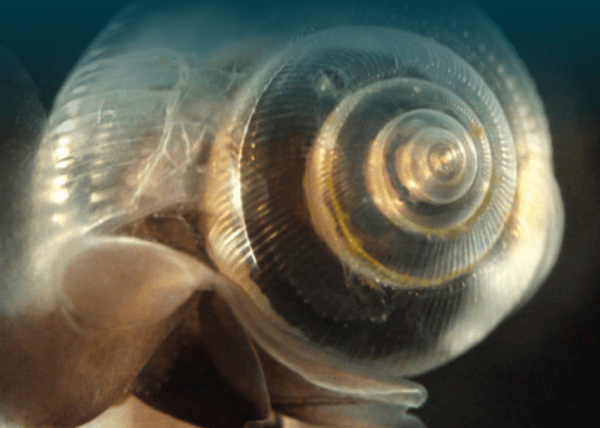First author of the study is PhD candidate Siri Ofstad from CAGE Centre for Arctic Gas Hydrate, Environment and Climate. The main finding is that there is a seasonal variation in plektonic populations in the Arctic ocean: Planktonic foraminifera and sea snail numbers swell from April to June in the Bjørnøyrenna area of the Barents Sea. The organisms, however, do not appear to be affected directly by high methane levels from the huge blow-out craters in the area.
The study was highlighted in Science News by AGU. The article points out that methane seepage may still have an effect: “The researchers hypothesize that increased levels of methane could enhance primary production in the water column indirectly by, for example, carrying nutrients toward the ocean surface or increasing carbon dioxide levels in the water”
Read more at Centre for Arctic Gas Hydrate, Environment and Climate
Photo: Limacina helicina (Planktonic sea snail). Credit: Katsunori Kimoto


